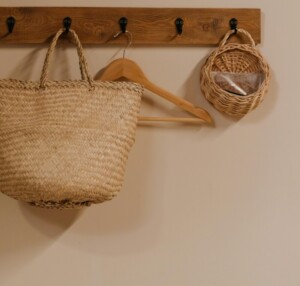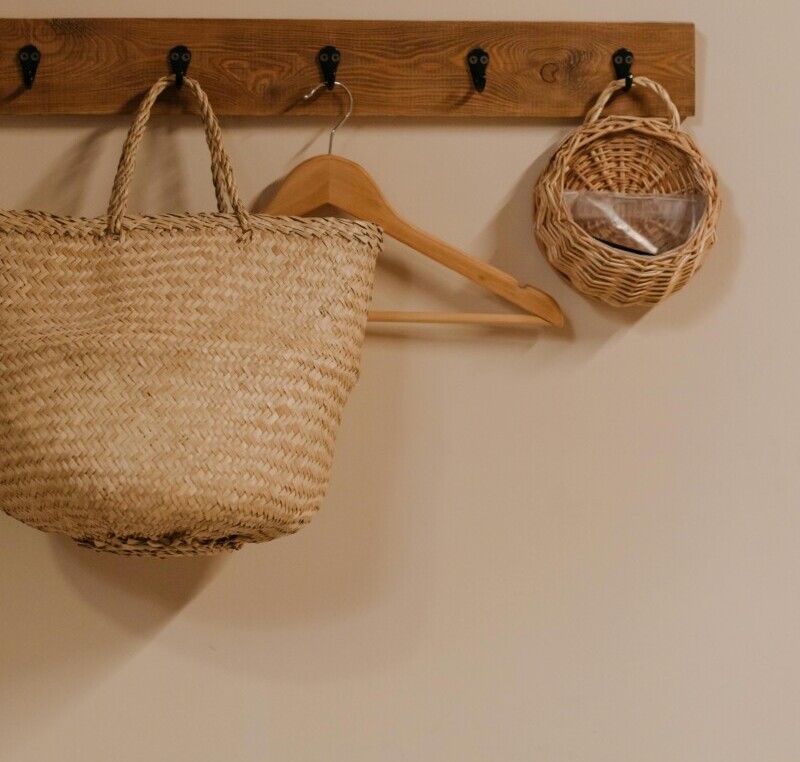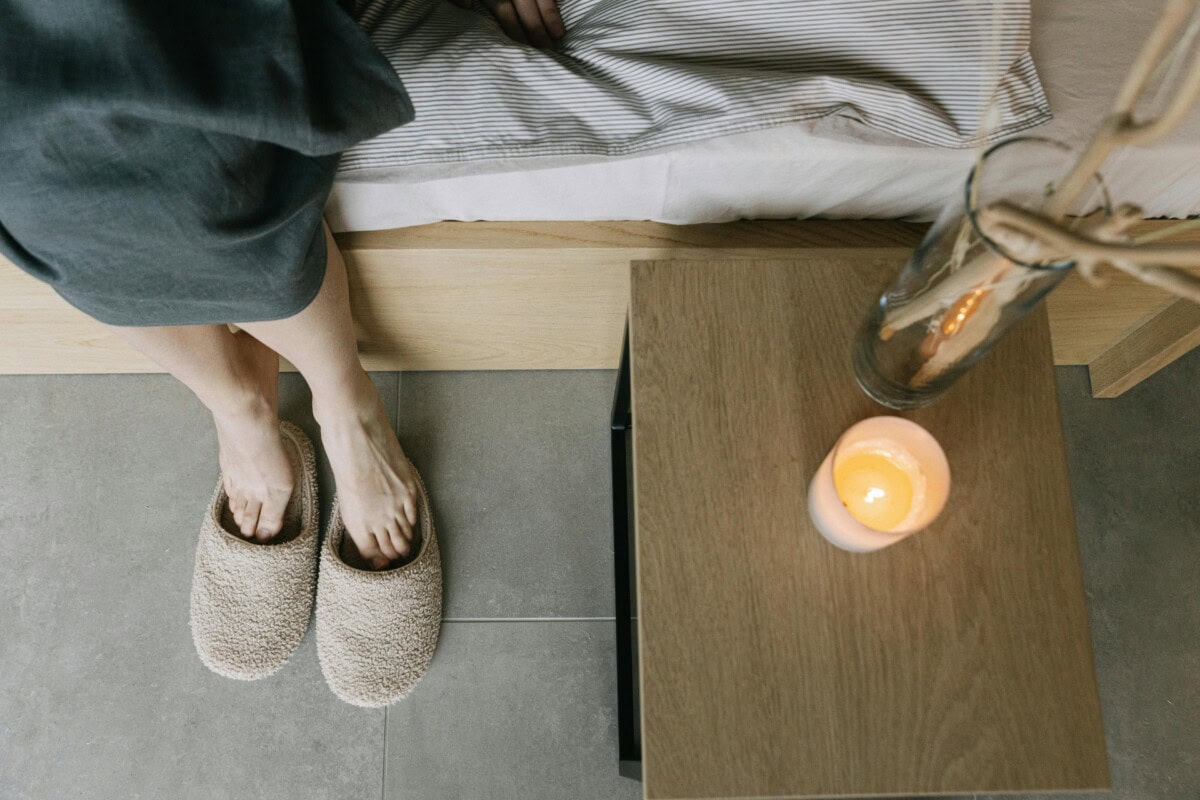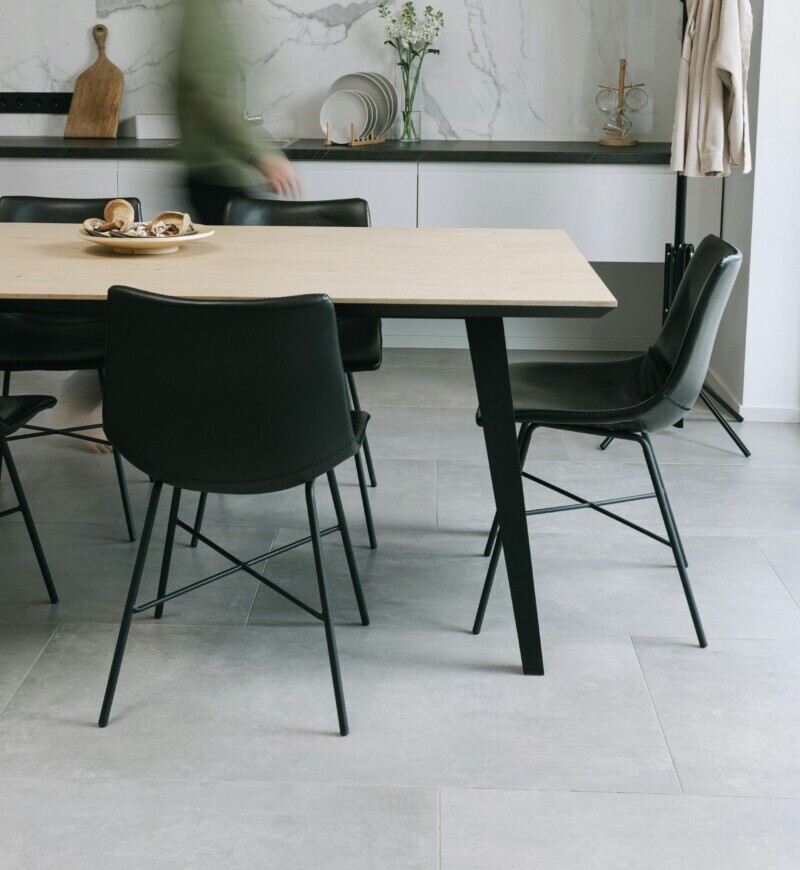What is Wabi-Sabi? Experts Weigh in On How to Design Your Home in This Ancient Style

Discover the art of integrating vintage charm with modern simplicity through the lens of wabi-sabi. From historic apartments in New York City to contemporary rentals in Los Angeles, this Redfin article will guide you in infusing your living spaces with the timeless beauty of wabi-sabi, blending the richness of vintage aesthetics with the elegance of modern design.

1. Embrace wabi-sabi’s principle
Embracing the wabi-sabi principle in your home invites a sense of appreciation for imperfection, simplicity, and the beauty of natural materials. Incorporating rustic elements, handmade objects, and weathered textures creates a space that exudes warmth and authenticity. By celebrating the beauty in the imperfect, your home becomes a sanctuary where every flaw tells a story and adds to its charm.
Marieke Rijksen Interior Designer and Content Creator at Whispering Bold Interior Design, a inspiration hub for interior design and DIY decor for those who love a little urban chic vintage flair, says, “My top recommendation is to focus on the essentials and start with decluttering and creating peaceful environments, as it sets the foundation for embracing wabi-sabi.
It’s important for newcomers to understand that wabi-sabi is not about achieving perfection, but rather finding beauty in the authenticity of imperfection. By letting go of excess possessions, prioritizing meaningful items that bring you joy and creating open, uncluttered areas, you can cultivate a sense of tranquility and harmony within your home.”
2. Allowing imperfections and impermanence to take place
Imperfection and impermanence are design principles that celebrate the beauty of flaws and the passage of time. They encourage the incorporation of natural elements and aged materials into design, creating spaces that feel authentic and alive.
Tim from a strategic design company, Girvin, based out of Seattle, mentions “Wabi-sabi is a Japanese aesthetic that combines two things: wabi, which is about simplicity and restraint, and sabi, which is about finding beauty in the aging of objects, showing the passage of time. These principles are rooted in Buddhism, emphasizing imperfection, impermanence, and emptiness as essential aspects of life.
These are ways to be thinking about how wabi-sabi could be applied to your placemaking ideals:
- Embrace imperfections: Let moss grow on your concrete, mix different stone sizes in your walkway, and showcase the flaws in timber planking. Imperfection adds character to your space.
- Keep it simple: Arrange objects on shelves with space between them, avoiding rigid alignments. Create a rhythm and delicacy in scale and alignment to turn the arrangement into art.
- Appreciate aged beauty: Value objects that show signs of use and age, like old tools or cracked bowls. Mix rustic elements with carefully finished ones to create contrast and simple beauty.”
3. Focus on natural materials
“Here’s a few easy tips to embrace the wabi-sabi design philosophy in your Japandi inspired interiors,” says Emily Bishop Founder and Owner of Japandi Supply House, a supply house based out of Chicago that sells home goods and daily items inspired by Japandi design and lifestyle. They focus on minimalism, nature, neutrals, and comfort.
“Focus on functional essentials, keep your space as clutter-free as possible – think what do I really need in the space. Focus on natural materials (wood, stone, patina metal, ceramics) , their beauty, durability and imperfections as they age. Embrace nature; include plants, natural light, furniture and decor made from natural materials. wabi-sabi is a calming philosophy reminding us of the beauty in being in harmony with nature.”
4. Create a space that’s connected to nature
Nicole Heininger from est.collective, a Los Angeles top-rated luxury interior design firm, shares, “Incorporating wabi-sabi elements into living spaces is about embracing imperfection and finding beauty in simplicity. Opt for natural materials such as wood, stone, and linen to create a sense of authenticity and tranquility. Emphasize handcrafted pieces with visible signs of wear, as they add character and tell a story. Remember, it’s not about perfection but about creating a space that feels lived-in and deeply connected to nature.”
5. Understand how you live in your space
“I think creating beautiful and useful spaces is best when you understand how you live and how the home is situated on the land,” recommends Alexandra Studio, a design firm based out of Oakland, CA. “Sometimes I encourage my clients to live in the space for a while to see where the light comes in or where they inevitably gravitate towards in the space. Once that’s understood, it’s natural to work with the flow of the space.
Make sure you always start with the aesthetic foundation of your home. If you keep that in mind as you remodel, your changes along the way won’t compete with each other or be too trendy and need updating every 5-10 years.
Use materials that work seamlessly with the era and style of the house and create some wabi-sabi by adding some favorite personal elements from your travels and family history. This allows for a very distinctive and unique home.”
6. Decorating and styling is a process
Wabi Asia, an antique Japanese furniture and home decor seller, recommends, “For newcomers delving into the realm of incorporating wabi-sabi elements into their living spaces, several key insights can guide their journey. Firstly, it’s essential to understand that wabi-sabi is not about achieving perfection but rather celebrating imperfection. Embracing this philosophy can liberate individuals from the pressure of flawless aesthetics and invite them to appreciate the beauty in the imperfect, aged, and weathered.
Crucial recommendations include starting small and gradually incorporating Wabi Sabi elements into one’s environment. This allows for a gradual adjustment to the mindset and aesthetic principles associated with wabi-sabi. Additionally, it’s vital to strike a balance between simplicity and clutter; while wabi-sabi encourages simplicity, excessive clutter can disrupt the sense of peace and harmony.
A common pitfall for newcomers is mistaking wabi-sabi for a purely aesthetic style rather than a deeper philosophical approach to life. It’s important to understand the underlying principles of embracing imperfection, finding beauty in simplicity, and fostering mindfulness in all aspects of life, not just home decor. By staying true to these insights and recommendations, newcomers can embark on a fulfilling journey of incorporating wabi-sabi into their living spaces and lives.”

7. Add a touch of your personality
“Natural shapes and materials stand as cornerstones, as does the cultivation of a clutter-free environment.
However, Emilia Jedamska, Director of St Tropez House, warns, “against the risk of stripping away all personality and warmth, as excessive minimalism can easily render spaces sterile. It is essential to keep spaces authentic and reflective of one’s personality.
Wabi-sabi is a unique aesthetic that may not resonate with everyone. While modern style lovers who favor minimalist, glass-and-steel style might find it challenging to adopt wabi-sabi, this philosophy fits seamlessly with the architectural heritage of the French Riviera. The region’s stone bastides provide an ideal backdrop for incorporating natural materials and embracing a luxurious return to the roots.
We would advise new owners of properties to appreciate the inherent beauty of aging materials and crafting spaces that foster peace and mindfulness. However, it’s essential to avoid forcing this style, as the true essence of Wabi Sabi lies in harmonious integration rather than mere decoration.”
8. A pitfall to avoid
“One key insight to remember is that wabi-sabi offers a unique form of freedom by accepting life’s imperfections,” shares Natalie from Decorus Design, a Sarasota, FL staging company. “Unlike the traditional pursuit of balance and perfection in interior design, wabi-sabi invites us to embrace a simpler, more authentic approach.
A crucial recommendation for newcomers is to avoid misconceptions about wabi-sabi. It’s not about shabbiness or unkemptness; rather, it’s a mindful embrace of imperfection with intentionality. Another pitfall to avoid is forcing a wabi-sabi aesthetic without considering personal resonance. It’s important to connect with what truly speaks to you.
Embracing wabi-sabi is akin to receiving a grounding hug from the earth. Utilizing natural materials and prioritizing simplicity fosters a deep sense of calm for the body, mind, and soul. Stepping into a room adorned with wabi-sabi decor invites you to take a deep breath and appreciate the beauty in transience, acknowledging that nothing lasts forever.
A decorating tip to enhance your wabi-sabi space is to incorporate handcrafted and vintage items. These pieces, with their unique imperfections and storied past, add depth and character, enriching your space with a sense of authenticity and history.”
9. Examples of natural and imperfect styles
“I find that wabi-sabi aesthetics celebrate the beauty of natural, imperfect elements like weathered wood and the raw, unpolished beauty of stone, which bring a sense of peace and connection to a space,” mentions Edward George London, Founder of Edward George London, an interior design publication. ”Embracing imperfection and impermanence in design allows for a deeper appreciation of the authenticity of materials and the stories they tell. It encourages a shift away from the pursuit of flawless perfection, fostering environments that feel lived-in and harmonious with nature.”
Incorporating wabi-sabi principles into interior design can involve using weathered wooden furniture with visible knots and cracks, complemented by handmade pottery with irregular shapes and glazes. Choosing natural, earthy colors like muted greens and soft browns further enhances the connection to nature. Decorative elements such as woven textiles and rough-hewn stone accents add texture and depth to the space, creating a serene and harmonious atmosphere that celebrates imperfection and impermanence.
10. Your aesthetic doesn’t have to be flawless
Tim Turman, Owner of a wabi-sabi decor company, AURA 8 HOME, suggests, “It’s essential to understand that wabi-sabi is not about achieving a flawless aesthetic but rather celebrating the authenticity and uniqueness of each object and space.
Select decor and furnishings that reflect the passage of time, such as weathered wood, rusted metal, or cracked ceramics. Incorporate elements of nature, like potted plants or natural fibers, to bring a sense of harmony and connection to the environment indoors.
However, newcomers should be cautious not to confuse wabi-sabi with neglect or disarray. While embracing imperfection, it’s still important to maintain cleanliness and organization within the space. Additionally, avoid overdecorating or cluttering the space, as simplicity is a cornerstone of wabi-sabi aesthetics. Finding the balance between minimalism and warmth is key to creating a truly serene and inviting environment.”
11. Finding beauty in simplicity
“When you sense deep inside you that feeling of ultimate fulfillment for even the most simple moments in life, it is then when you can appreciate the true unceremonious treasure of wabi-sabi,” shares artist, Julia Apostolova. “It is not just a feature, contributed with earth materials, it’s an outlook of the world and its unending beauty.” It’s a way of life and value that teaches us to find contentment and appreciation in the imperfect, fleeting moments of existence.
12. Minimalistic, natural materials
“We recommend keeping your design minimalistic, focusing on natural materials and organic shapes by incorporating aged or handmade items in your decor,” suggests Maria Zare from Bellari Home, a home decor shop. “Ensure that your space feels inviting and lived-in rather than stark and cold. It’s important to remember that wabi-sabi is more than just a design style — it’s a philosophy that celebrates the beauty of imperfection, impermanence, and simplicity. Let this philosophy guide your design choices.”

The post What is Wabi-Sabi? Experts Weigh in On How to Design Your Home in This Ancient Style appeared first on Redfin | Real Estate Tips for Home Buying, Selling & More.
